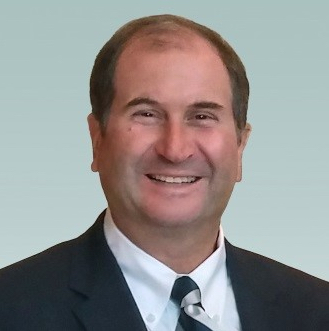A Tree Grows In Brooklyn. And How A Camera Company Grows In Glendale

View/download the original article published on Security World here.
Our story below is a good deal different from that of the Irish-American Francie Nolan found in the 1943 classic. But when you consider what Michael Kaplinsky, Ph.D., and Vladimir Berezin, Ph.D., created in 2003 -originally from Russia- you should be similarly inspired.
Axis Communications is credited with being the first IP-camera manufacturer back in 1996. And today there are a plethora of IP-camera manufacturers that have jumped into the market. Security.World has the count at over 350 camera manufacturers. Interestingly, many of those manufacturers entered the market early when it was still “standard definition” resolution. Companies such as IQeye became a very popular “SD” camera manufacturer. They rose quickly and gained significant market success. And they also made a wager on the industry that ‘megapixel’ would not catch on and become viable.
Then there were companies —such as Arecont Vision— that made just the opposite wager. Megapixel was going to be “the norm” and the two well-educated company founders put everything they could into building a megapixel camera manufacturer that would deliver on the promise of high-definition resolution.
There has since been an ongoing shakeout in the IP-camera market, even seeing powerhouse IQeye being acquired by Vicon (that today has its own challenges in the market). And as the digital-physical security market continues to mature, we are witnessing other mergers and acquisitions of various well-known security brands. Axis and Milestone being acquired by Canon. Flir acquiring DVtel and ISD. Bosch taking over Sony’s security sales.
You also realize the maturation of a stand-alone company such as Arecont Vision, a U.S.-based company with its Made In The USA credentials, continuing to grow and thrive. Recently, Security.World caught up with the Arecont Vision team in their Glendale, CA, corporate office as they were taking over another floor of the building to support their continued growth.
During the early years, many industry pundits would shine a spotlight on each and every product gaffe or technical quality issue that Arecont Vision was guilty of. Their rapid growth contributed to those early miscues and it was easy —and a probably good sport— to throw rocks at companies that are growing fast and making mistakes.
Looking at Arecont Vision today, we see a much stronger company, one that is driven more by procedures and policies than by the seat of their pants. A company that has learned a great deal since its founding in 2003.
As we toured the growing facilities, we saw the annexation of the entire bottom floor of the 7-story office building in Glendale, California, where we also witnessed a company culture that resonated with an industry leader. Nowhere did we find that feeling more proudly on display than in Steven Roberts, Director of Manufacturing, who was brought in seven years ago to bring discipline and purpose to the camera manufacturing process, which was –and is- being carried out right in this Glendale building.

Mr. Roberts, who started at Arecont Vision in September 2010 and is a student of quality management principles and continually measuring the effectiveness of his team, had put in place numerous practices to improve the quality of the Arecont Vision cameras, as well as the overall delivery times to market.
Roberts began to evaluate the processes from that first month on the job and quickly presented to management a set of goals to improve quality, efficiency, and throughput while also eliminating overtime.
The addition of quality checkpoints in their manufacturing processes and thorough reviews of all their vendors helped correct on-going quality issues that were happening and prevented quality issues from surfacing again.
Roberts has previously set up ISO procedures in past companies he had worked for and he is very knowledgeable in understanding how proper quality processes work and if done properly, the benefits that can come from them. Although Arecont Vision is currently not ISO certified, all processes and procedures are set up to transition to ISO at any given time.
These new processes were not exactly Mr. Roberts alone. It took everyone in the company to get behind and especially the cooperation from the manufacturing floor team in understanding the changes that were being implemented and the benefits that would come from such changes. Most –if not all– quality issues were resolved by the end of 2012. You can tell how well the quality measures were working by looking at internal failure rates, the number of cameras being manufactured daily, limited production fallout, and a reduced RMA rate.
Acknowledging that in years past, Arecont Vision faced issues with quality control, Roberts replies that Arecont Vision is very proud of the product it produces today. “We have gone through great lengths to get quality under control and work hard every day to maintain that quality level,” he stated.
Roberts went on to say, “When I started here at Arecont Vision, we were working in tight office spaces on the 7th floor. We have grown in many ways but last year’s move to the first floor solidified manufacturing. You can stand in one room and see the complete flow of the product. This has allowed us to be more flexible in our build plans and has brought the production workers together as one large unit that understands the daily goals and objectives.”

Scott Schafer, Arecont Vision’s, Executive Vice President Of Sales, Marketing, Service and Quality also weighed in on the growth and future of the company.
Schafer shared his thoughts on the transition from analog to IP technology and how the adoption of IP-camera technology continues to rise over analog. However, Arecont Vision is not looking solely at market adoption to fuel sales growth?
Growth opportunities will inevitably come at the expense of projects that would have gone to analog. Schafer also sees the replacement of installed VGA camera projects, as well. The reason for both changes is similar. Roughly 300,000 pixels delivered by analog and VGA cameras never provided enough detail for security people to do their job. Now with higher megapixel single sensor (1080, 3MP, 5MP, 10MP, 4K) products and panoramic multi-sensor products, the value is immense and can be proven.
“We see growth opportunities all over the world. Our strongest growth regions have been the USA and the Middle East, Africa, and India. For vertical markets, we continue to see strong growth in corporate enterprise/campuses, retail, banking, education, and healthcare. City surveillance has also picked up with some very exciting projects.”
But there are new opportunities for the deployment of multi-megapixel solutions covering open spaces that were not economically reasonable to do so before. Interesting examples are sports stadiums. Also, getting more attention —because the quality of the video image— are loading docks at distribution centers, larger manufacturers, and retailers.
“In the case of stadiums, to get recognizable faces in all seats it would have taken nearly 3,000 analog or VGA cameras to do the job. Now we can do it with fewer than 100 10MP cameras. These 100 cameras not only deliver the information needed for security operators to do their job, but the management of the system is no longer an overwhelming task,” continued Schafer.
“For loading docks, using analog/VGA technology, it would take at least one camera per dock. Now, one multi-sensor panoramic camera can cover the area with much better image clarity. And it is easier for the operator to utilize the system and far less expensive to install the solution because it is one camera placement, one network cable, and one VMS/NVR license fee. And now with remote focus, it is much easier to get a great image from the camera all the time,” Schafer explained
When looking out into the future for Arecont Vision, Schafer pointed out that the company would continue the course they have been on as the pioneer of multi-megapixel video security cameras.
“We will build more unique high-quality products that deliver measurable value. We will continue to drive even easier installation and better use of our products. We will continue to partner with the world’s best technology companies (VMS, storage, network, analytics, etc.) and leading systems integrators to deliver outstanding solutions for our clients. And we will continue to deliver exceptional service and support to our customers globally,” stated Schafer.
Someone who has been with Arecont Vision for 13 years in a variety of roles within the company is Jason Schimpf. Currently, Director of Marketing Programs at Arecont Vision, Jason has seen exceptional growth along with most of the growing pains.

When asked about what is it that makes Arecont Vision so sought after to partner with, Schimpf replied: “Resolution continues to be a differentiator for Arecont Vision, the 40MP SurroundVideo camera is the highest resolution camera in the industry. But in addition to resolution, our partners team with us because we provide high quality, ‘Made in USA’ innovative products, that are easy to integrate and provide a solid return on investment to our mutual customers.”
“For example,” Schimpf continues, “Arecont Vision recently announced the third generation of the highly popular, multi-sensor OMNI series that is 100% remote configurable. The integrator simply hangs the camera and then through the VMS interface, he can pan, tilt, zoom and focus each sensor independently from a safe and comfortable work environment – versus balancing on a ladder.”
VMS partners see products like this as a real game-changer that can create opportunities for Arecont Vision and for the VMS vendor. Like most of Arecont Vision’s new cameras, the OMNI G3 will be plug and play with most VMS partners utilizing existing drivers since the core camera API remains the same as it was since Arecont Vision first introduced H.264 to the market in 2008. Because of the unified API, industry-leading VMS partners require less time to maintain integration and thus integrate new products.
Before new cameras and firmware versions are provided to VMS partners, Arecont Vision’s QA team tests the cameras to ensure they work on the partners' existing drivers.
“Arecont Vision is the only camera manufacturer that certifies VMS integration through our MegaLab certification program,” Schimpf added. “Arecont Vision’s MegaLab is an advanced certification and testing environment launched in 2010. Located here at Arecont Vision’s headquarters, MegaLab has been used by technology partners to validate new software product releases and to troubleshoot configurations so that they can deliver the best possible integration and reliability for customer projects.”
Schimpf added that Arecont Vision is fully committed to its VMS and ecosystem partnerships. The company is focused on advancing camera technology and he claims they are only camera manufacturer that does not offer a VMS. “This is so our partners feel comfortable working sales opportunities and projects with our sales team. Our online project registration system requires integrators to list the VMS that they plan to use on the project,” explained Schimpf.
In many cases, the VMS provider is unaware that their software was specified, so Arecont Vision is able to provide these sales leads to their system integrator partners, further building the corporate and local relationships.
“Innovation, ease of integration, MegaLab certification, and true business partnerships is why our partners want to do more business with Arecont Vision,” Schimpf stated.
Schimpf went on to share some company highlights that help Arecont Vision remain a viable partner in our industry:
- Innovative products and features, OMNI 3
- SAME API foundation as introduced in 2008
- Quality products, Made in the USA
- Unified firmware
- The community sees Arecont Vision as a growth partner
- MegaLab Certification
- Focus on cameras, no VMS
- Ease of install
- Easy for our ecosystem to do business with us
- Our VMS partners understand that we bring real value and return on investment to our mutual customers.
We also spoke with Jeff Whitney, Vice President of Marketing, where we asked him what Arecont Vision needed to do to make sure it doesn’t go the way of IQeye or other such companies that are no longer a dominant player as Arecont Vision is today.

“Arecont Vision has invested heavily in R&D for more than thirteen years. We have continued our development efforts to incorporate new features into ever-better camera designs continuously throughout that period, and it remains core to our company to maintain our leadership of the megapixel industry. We have introduced seven new megapixel camera series in 2016 alone with more in development for the months and years ahead,” Whitney replied.
Whitney shared that many IP-camera vendors have attempted to copy Arecont Vision’s advanced designs over the years, no more so than in the multi-sensor panoramic series we introduced to the industry-first in 2006.
“Our 5th generation 180- and 360-degree SurroundVideo® G5 panoramic and 2nd generation SurroundVideo Omni G2 omnidirectional cameras remain the segment leaders thanks to continued refinement and the introduction of new features and form factors, as well as integration with the industry’s leading VMS vendors,” Whitney stated.
Whitney also provided some company milestones that they are proud to highlight:
- 1st 2MP (two megapixel) network IP-camera (2004)
- 1st 3MP dual-sensor Day/Night camera (2005) [MegaVideo]
- 1st 5MP H.264 IP-camera (2006) [MegaVideo]
- 1st multi-sensor multi-megapixel panoramic camera (2006) [SurroundVideo]
- 1st complete line of H.264 megapixel cameras (2008)
- 1st 10MP H.264 network camera (2009) [MegaVideo]
- 1st multi-sensor 20MP 180° and 360° panoramic camera series (2011) [SurroundVideo]
- 1st multi-sensor 12MP 180° with Wide Dynamic Range (2012) [SurroundVideo]
- 1st and smallest professional 1 – 5MP dome camera series (2013) [MicroDome]
- 1st 40MP 180° and 360° camera series (2013) [SurroundVideo]
- 1st omnidirectional multi-sensor, multi-megapixel camera (2014) [SurroundVideo Omni]
- 1st compact dome camera with remote focus (2014) [MicroDome G2]
- 1st multi-sensor, multi-megapixel panoramic camera with remote focus/zoom (2015) and advanced low-light technology [SurroundVideo G5]
- 1st tethered multi-megapixel camera with interchangeable lens (2016) [MegaVideo Flex]
- 1st omnidirectional multi-sensor, multi-megapixel camera with remote focus (2016) [SurroundVideo Omni G2]
- 1st extremely compact multi-sensor, multi-megapixel panoramic camera (2016) [SurroundVideo G5 Mini]
- 1st compact dual-sensor adjustable view megapixel camera with interchangeable and remote focus lenses (2017) [MicroDome Duo]
“We continue to reduce costs and increase video coverage while reducing the numbers of fixed-view cameras required in both indoor and outdoor spaces as well as deliver continuous coverage in replacing legacy PTZ technology” Whitney added.
Arecont Vision has also introduced award-winning innovative designs such as the MegaVideo Flex series that does away with the traditional camera body to allow the camera to be mounted on walls, in corners of ceilings, inside vehicles, ATMs, and other equipment and tight spaces.
The company’s MegaDome® 4K series not only brings outstanding ultra-high resolution video but comes in an amazing, simple design for rapid and easy installation. Arecont Vision continues to make all their cameras easy to install, adding remote focus (and where appropriate, remote zoom) to the complete product line up. That along can slash installation times and cut costs.
“We also invested heavily several years ago in initial product reliability, quality assurance, and post-installation support. The result is that today we believe we have the lowest RMA rates in the surveillance camera industry among major manufacturers, and we have dramatically improved the customer support experience through our award-winning Technical Assistance Center (TAC),” stated Whitney.
It is the combination of these features and capabilities, combined with an ongoing commitment to industry standards such as ONVIF that has helped Arecont Vision continue to grow to the benefit of customers –new and old– and their technology partners year over year.
The Future
Rumors continue to swirl around the industry that Arecont Vision would be acquired by a much larger organization, much like Axis was acquired by Canon. Arecont Vision executives continue to downplay those rumors. It has become quite clear that the small company that took a stand on megapixel technology in 2003, that withstood the criticisms and critiques in years past, is, without doubt, one of the strongest IP-camera manufacturers in our industry.
Arecont Vision management shared with us that the company has experienced high revenue growth over the past five years and remains a highly profitable company while ensuring competitive pricing to its customers. Combined aggregate growth (CAG) has been in the double digits over the last eight years for the company.
As from the 1943 book A Tree Grows In Brooklyn, ‘the tree of heaven has grown and re-sprouted in the building’s yard despite many efforts to destroy it,’ is indeed a great metaphor for the growth of Arecont Vision and the future ahead for it. Doctors Kaplinsky and Berezin should be proud of what they have built and grown. I’m sure Francie is.














